English Present Simple Tense Worksheet
Are you in need of a practical and helpful resource to reinforce your understanding of the English Present Simple tense? Look no further! This blog post provides an overview of a worksheet designed to strengthen your grasp of this essential grammar concept. Whether you are a beginner student looking to solidify your foundation or an intermediate learner seeking to polish your skills, this worksheet is tailored to suit your needs.
Table of Images 👆
- Simple Present Tense Worksheets
- English Verb Tenses Worksheets
- Simple Present Wh-Questions Worksheets
- Past Present Future Tense Worksheets Grade 3
- Past Present Future Verbs Worksheet
- Past and Present Tense Verbs for Kids
- Past Present and Future Tense Worksheets
- Past Present Future Worksheets Printable
- Grammar Worksheets on English Present Simple Tense
- Present Simple Tense Worksheets for ESL Student
- Simple Present Tense Worksheet
- Basic English Grammar Simple Present Tense Worksheet
- English Present Simple Practice Exercises
- Present Simple Tense Activity Sheets for Students
- ESL Present Simple Tense Question Practice
- Present Simple Tense Practice Worksheet
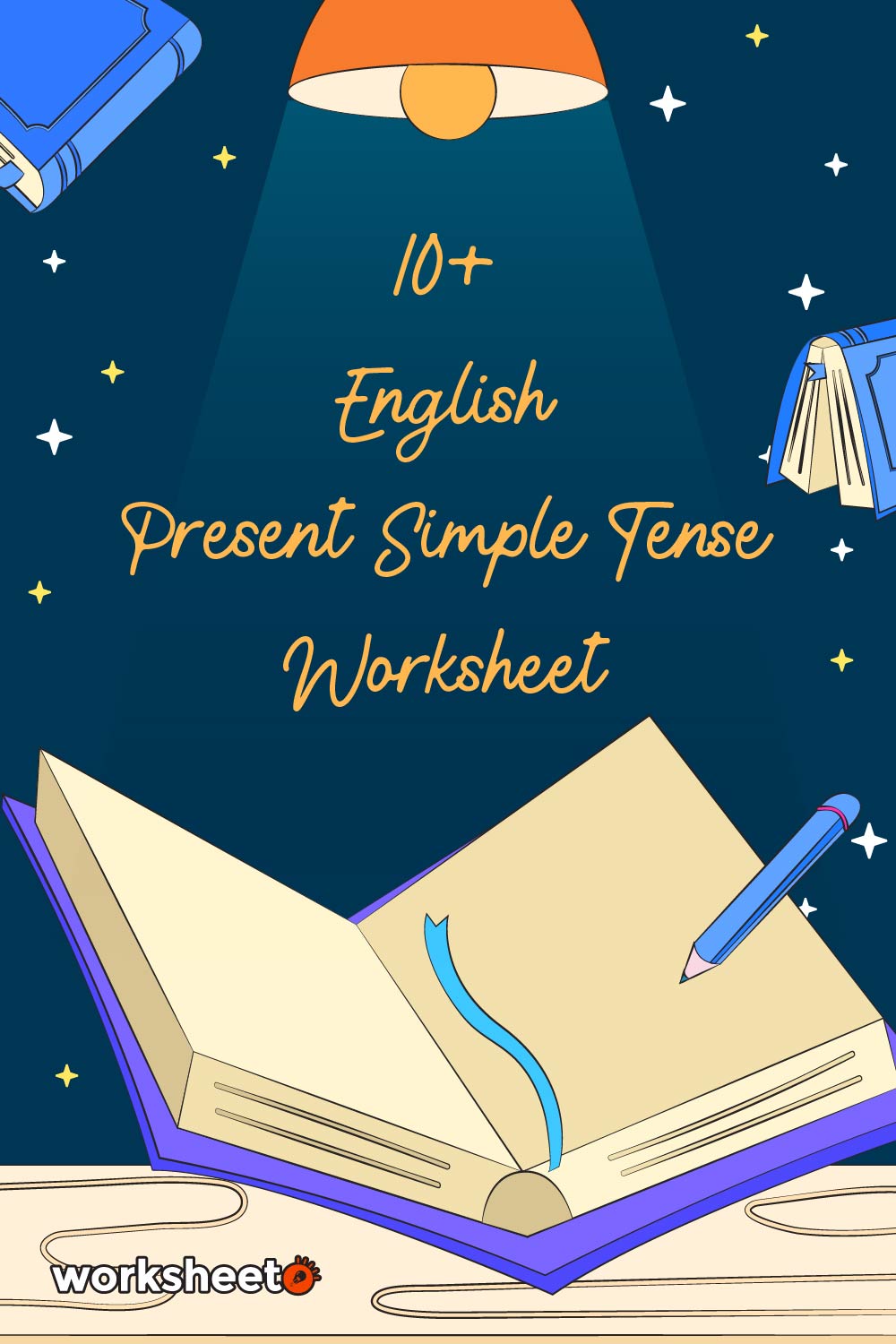
More English Worksheets
Free Printable English WorksheetsEnglish Worksheets for Grade 2
Comprehension Reading English Worksheets
English Colors Worksheet
Soapstone English Worksheet
English and Spanish Worksheet Family
8 Grade English Worksheet Halloween
Printable English Worksheets 7th Grade Language Arts
Primary English Direction Worksheet
English Primary 1 Worksheet
What is the present simple tense?
The present simple tense is a grammatical tense that is used to describe actions that happen regularly, habits, general truths, and scheduled events. In English, it is formed by using the base form of the verb, adding an -s or -es ending for the third person singular, and is often used with adverbs of frequency such as always, often, or rarely.
How do we form the present simple tense for regular verbs?
To form the present simple tense for regular verbs, you typically add -s or -es to the base form of the verb when conjugating for third person singular subjects (he, she, it). For example, "I play" becomes "he plays", "I watch" becomes "she watches". For all other subjects, you just use the base form of the verb without any additional endings.
What is the third person singular rule?
The third person singular rule in English grammar involves adding an "-s" or "-es" at the end of a verb when referring to he, she, it, or a singular noun. This is done in the present simple tense to indicate that the action is being performed by only one person or thing. For example, "He teaches English" or "She runs every day.
How do we form the negative sentences in present simple tense?
To form negative sentences in the present simple tense, add the auxiliary verb "do" (do not/does not) before the base form of the verb. For example, "I do not play soccer" or "She does not like spicy food.
What are the common time expressions used with the present simple tense?
Common time expressions used with the present simple tense include: always, usually, often, sometimes, rarely, never, every day, every week, every month, on Mondays, on weekends, in the mornings, in the afternoons, at night, once a month, twice a week, etc. These time expressions help to indicate the frequency or regularity with which an action or event happens in the present.
How do we use the present simple tense to talk about habits and routines?
In English, the present simple tense is used to talk about habits and routines that are repeated regularly. For example, we use it to describe things we do every day, every week, or at specific times. It is important to remember that the present simple is used for facts, general truths, and scheduled events in addition to habits and routines.
Can we use the present simple tense to talk about future events?
Yes, the present simple tense can be used to talk about future events, especially when they are scheduled, fixed, or planned. For example, "The train leaves at 6 pm tomorrow" or "My flight arrives on Friday." This usage is common in timetables, schedules, and other future plans that are considered certain or unchangeable.
How do we use the present simple tense to express general truths or facts?
The present simple tense is used to express general truths or facts by stating something that is always true, habitual, or universally accepted. In these cases, the present simple tense is used without any specific time reference and is often accompanied by adverbs such as "always," "usually," "often," or "never." For example, "Water boils at 100 degrees Celsius" or "The sun rises in the east.
What are some irregular verbs in the present simple tense?
Some common irregular verbs in the present simple tense include "go," "have," "do," "be," "say," "make," "see," "take," "come," "give," and "go." These verbs do not follow the typical pattern of adding "-s" or "-es" for the third person singular form.
What are the differences between the present simple tense and other tenses in English?
The present simple tense in English is used to describe habitual actions, general truths, facts, and scheduled events. Unlike other tenses, such as the past simple or future simple, which refer to actions that have already occurred or will occur in the future, the present simple focuses on actions that happen regularly or facts that are true in the present moment. The present simple also does not require the use of auxiliary verbs like "have" or "will," making it simpler to use and understand in comparison to other tenses.
Have something to share?
Who is Worksheeto?
At Worksheeto, we are committed to delivering an extensive and varied portfolio of superior quality worksheets, designed to address the educational demands of students, educators, and parents.


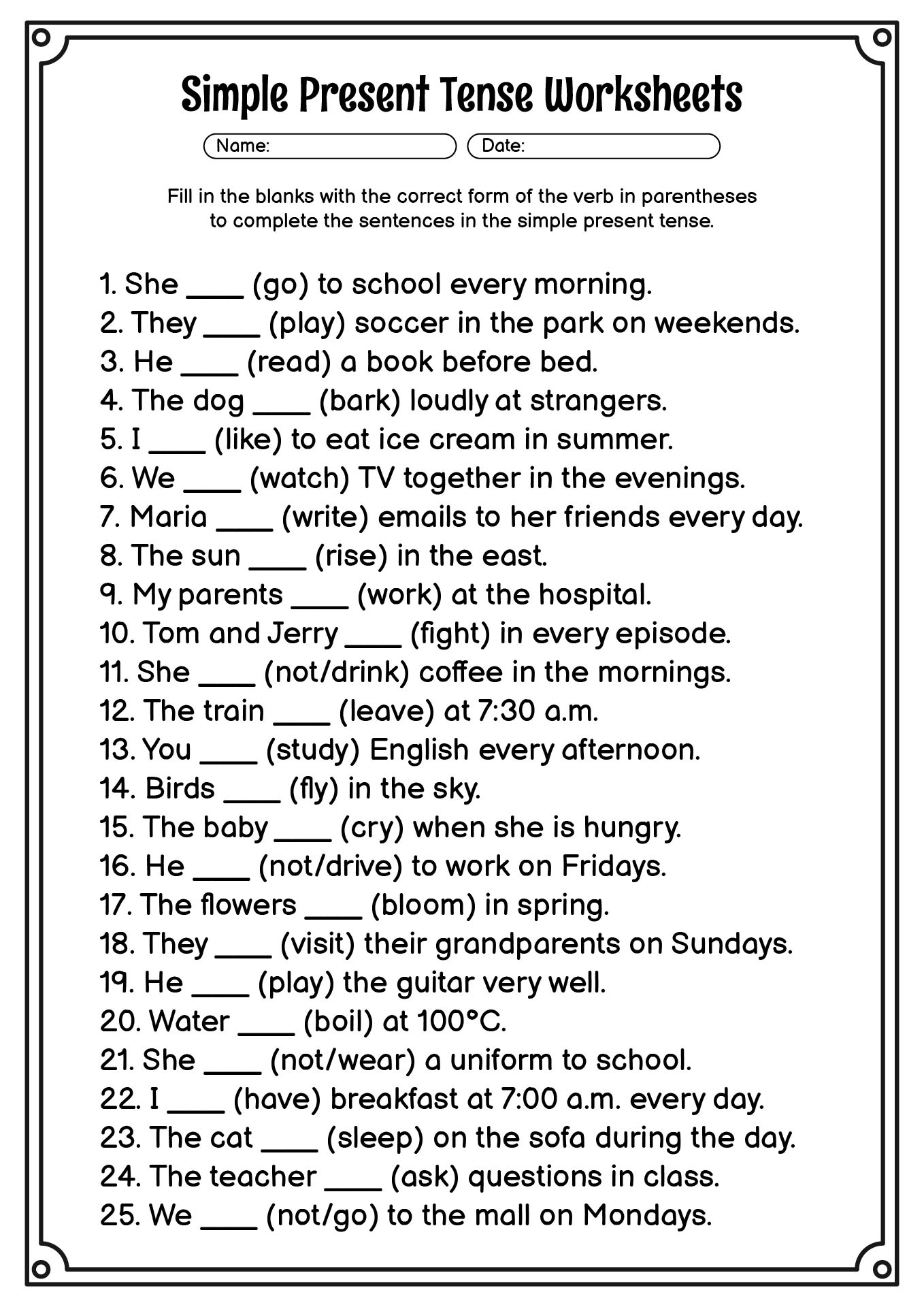



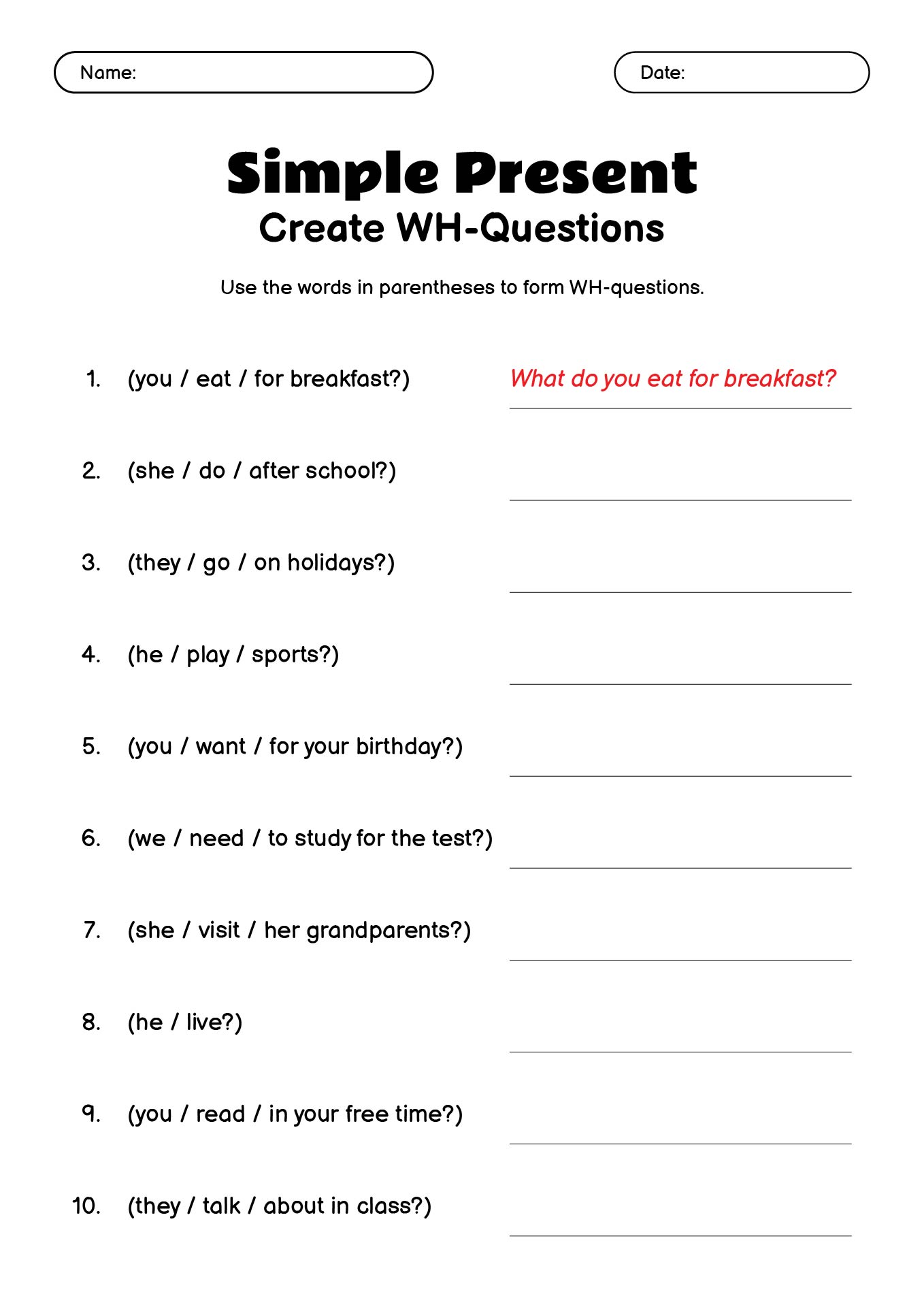
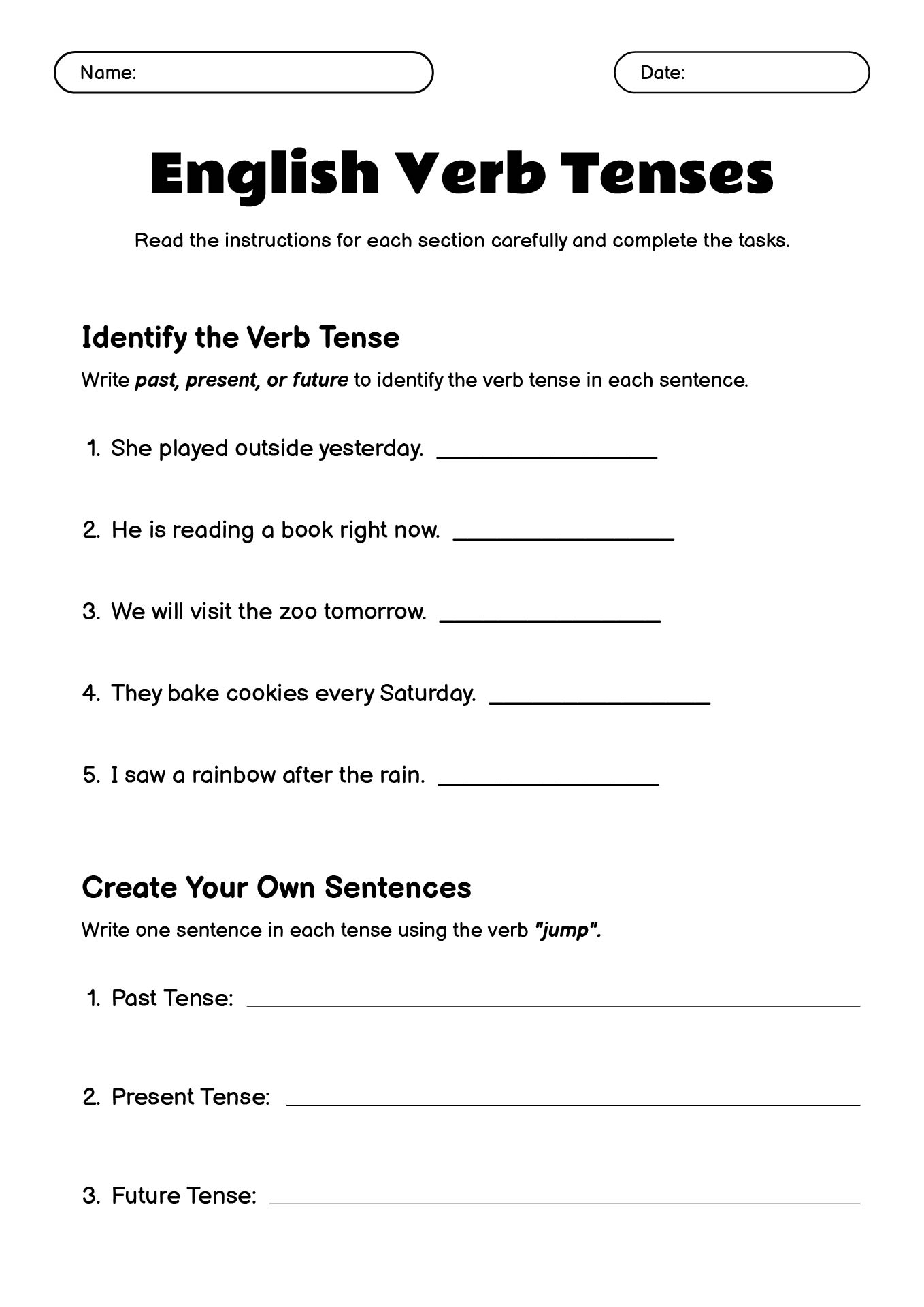
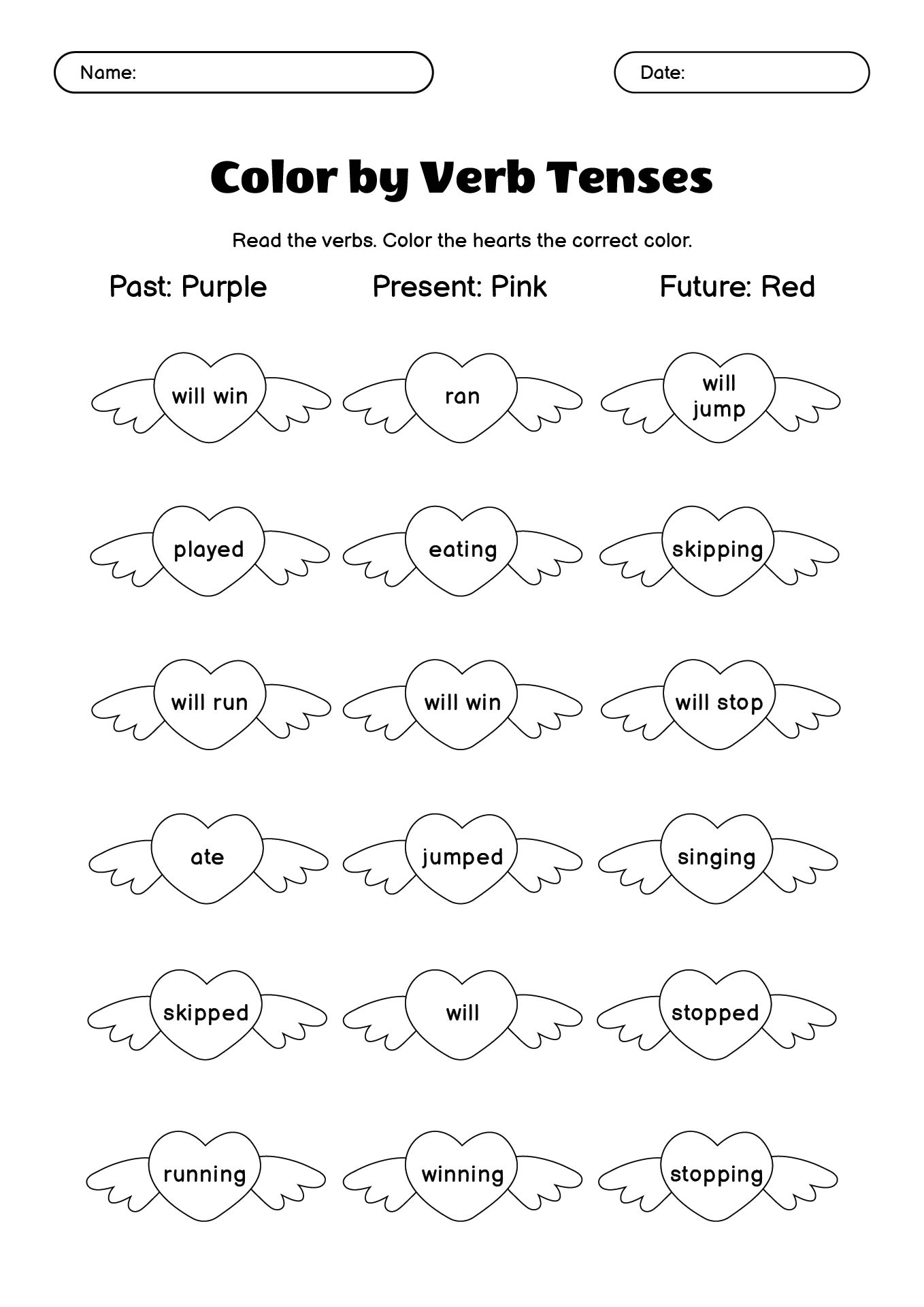
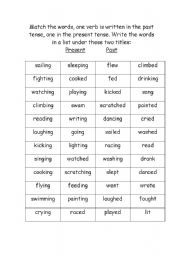
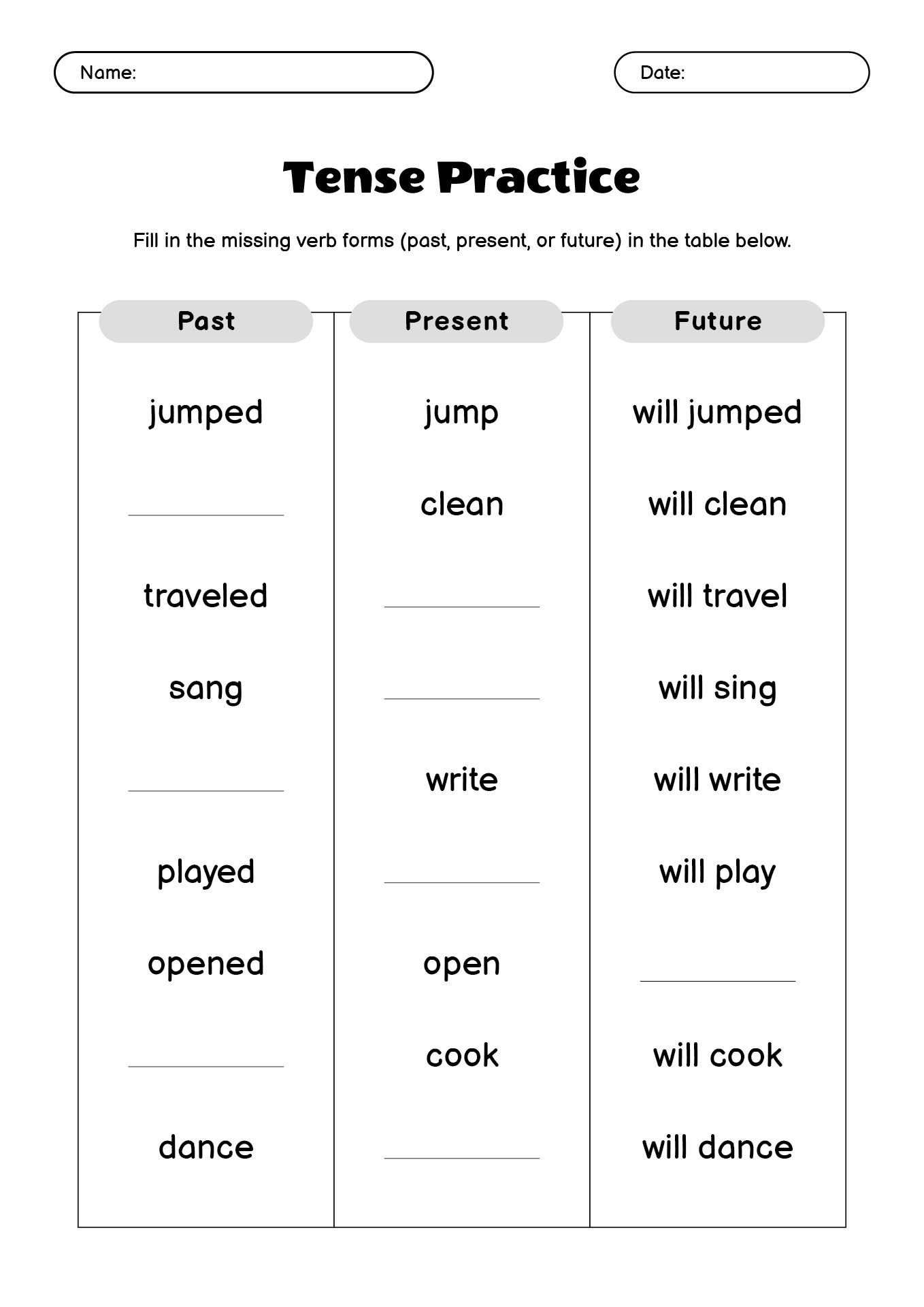
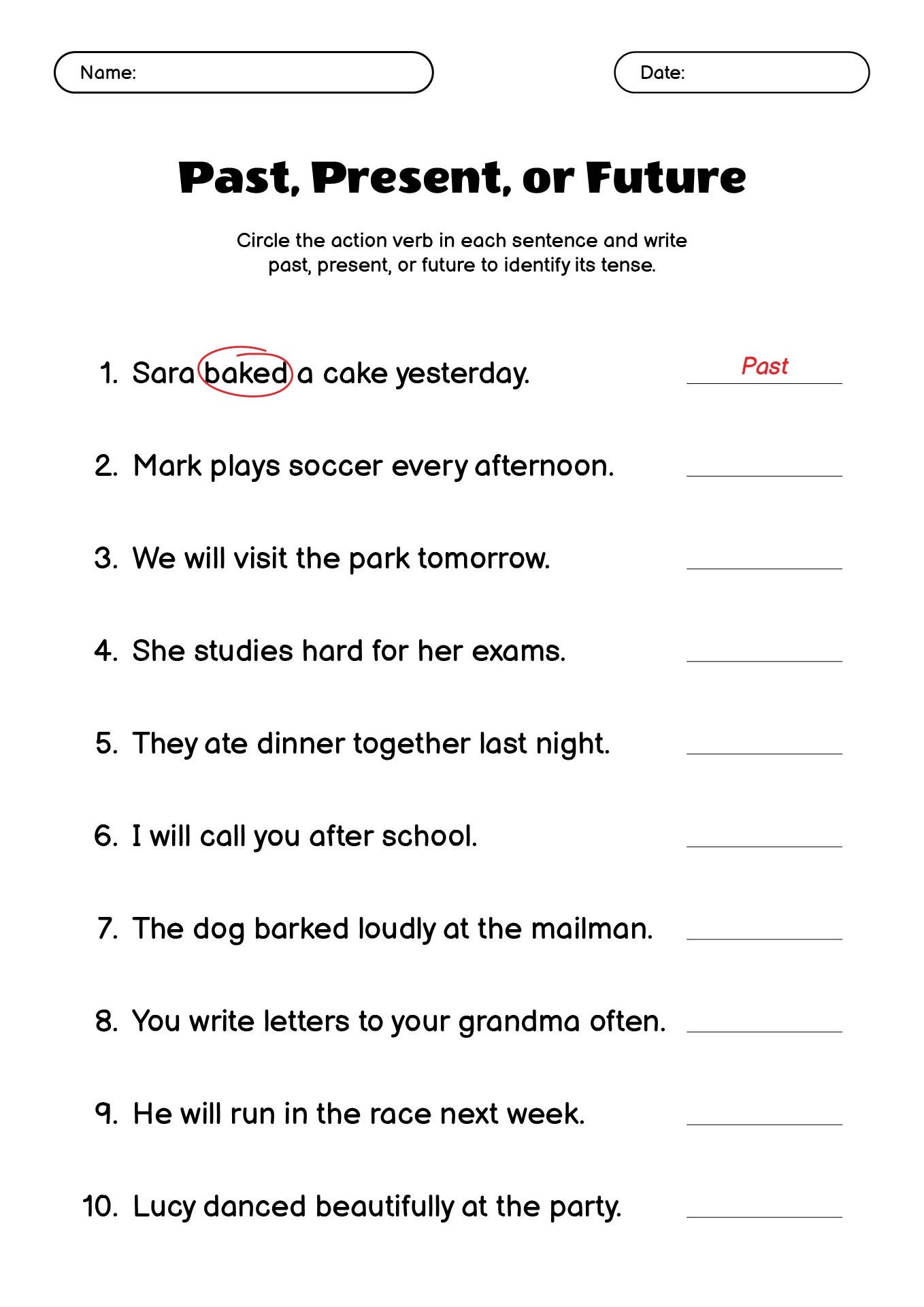
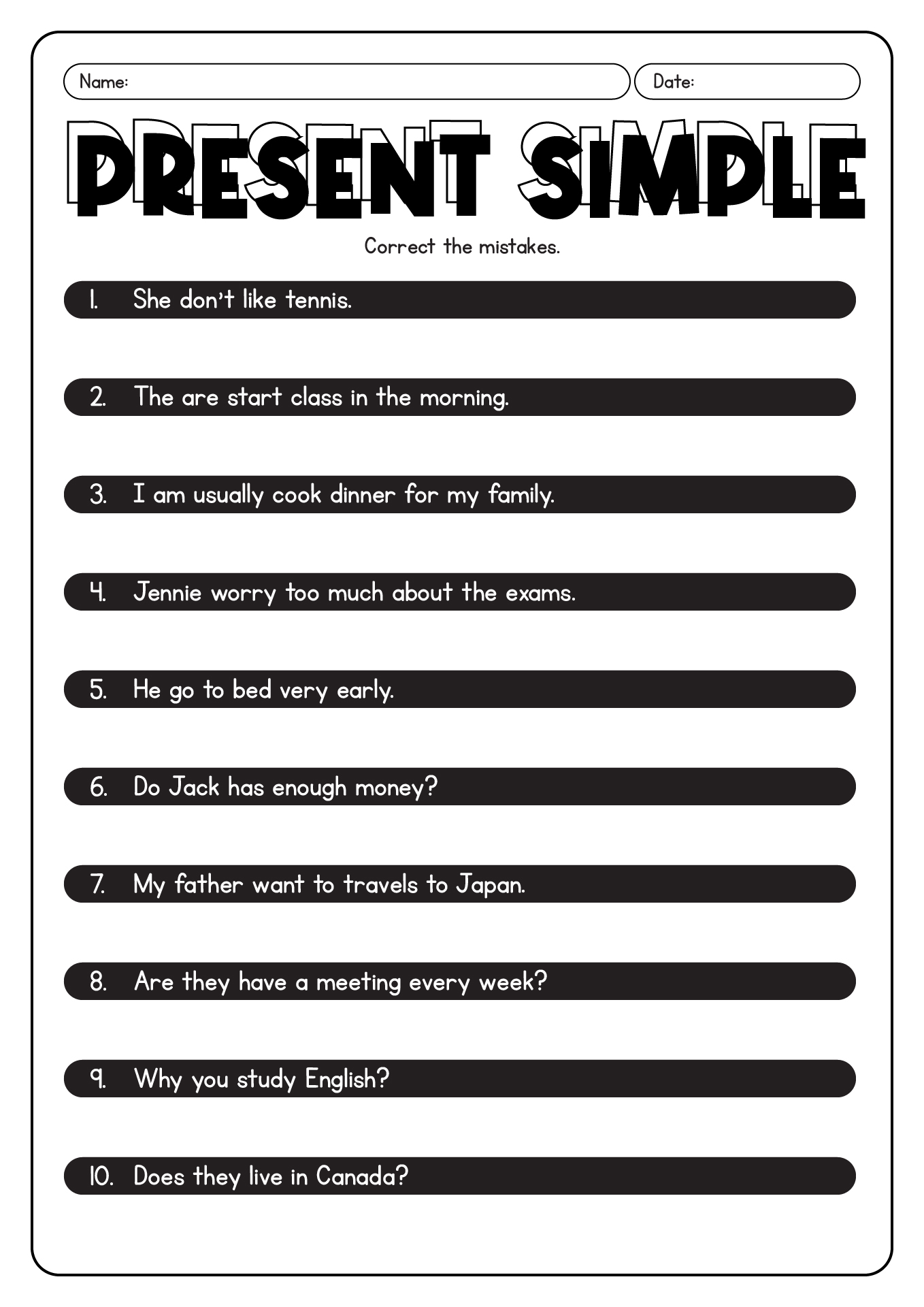
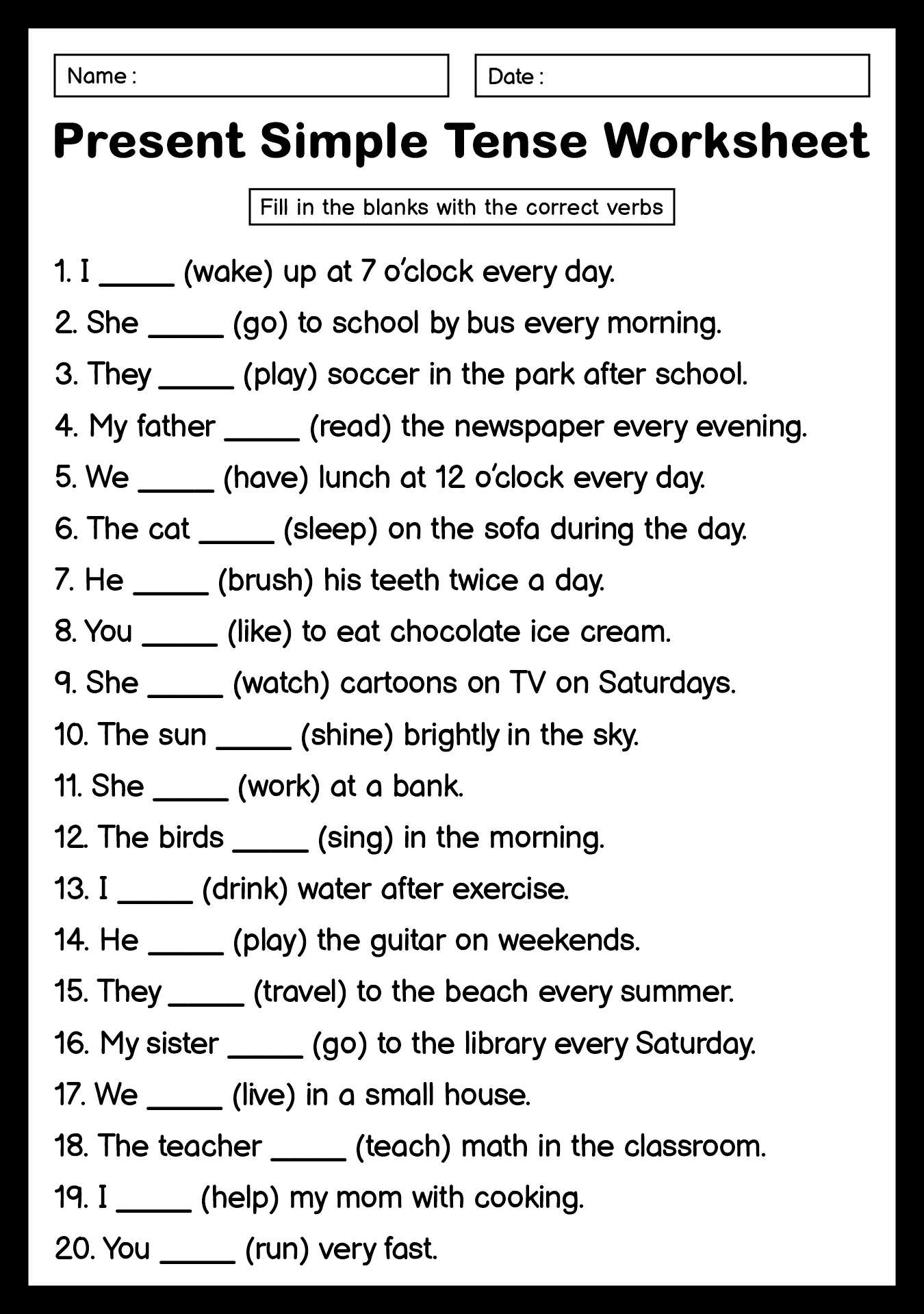
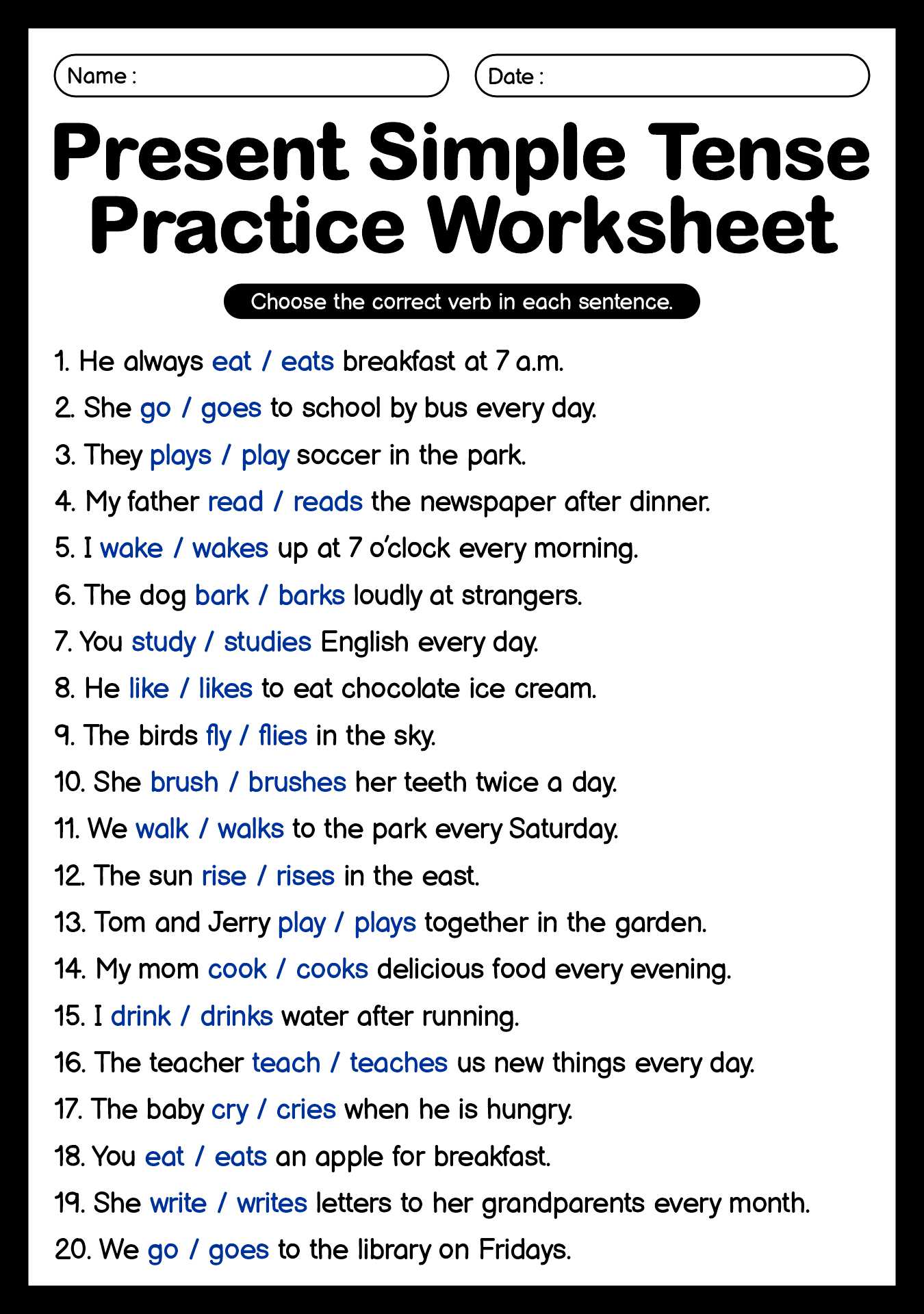
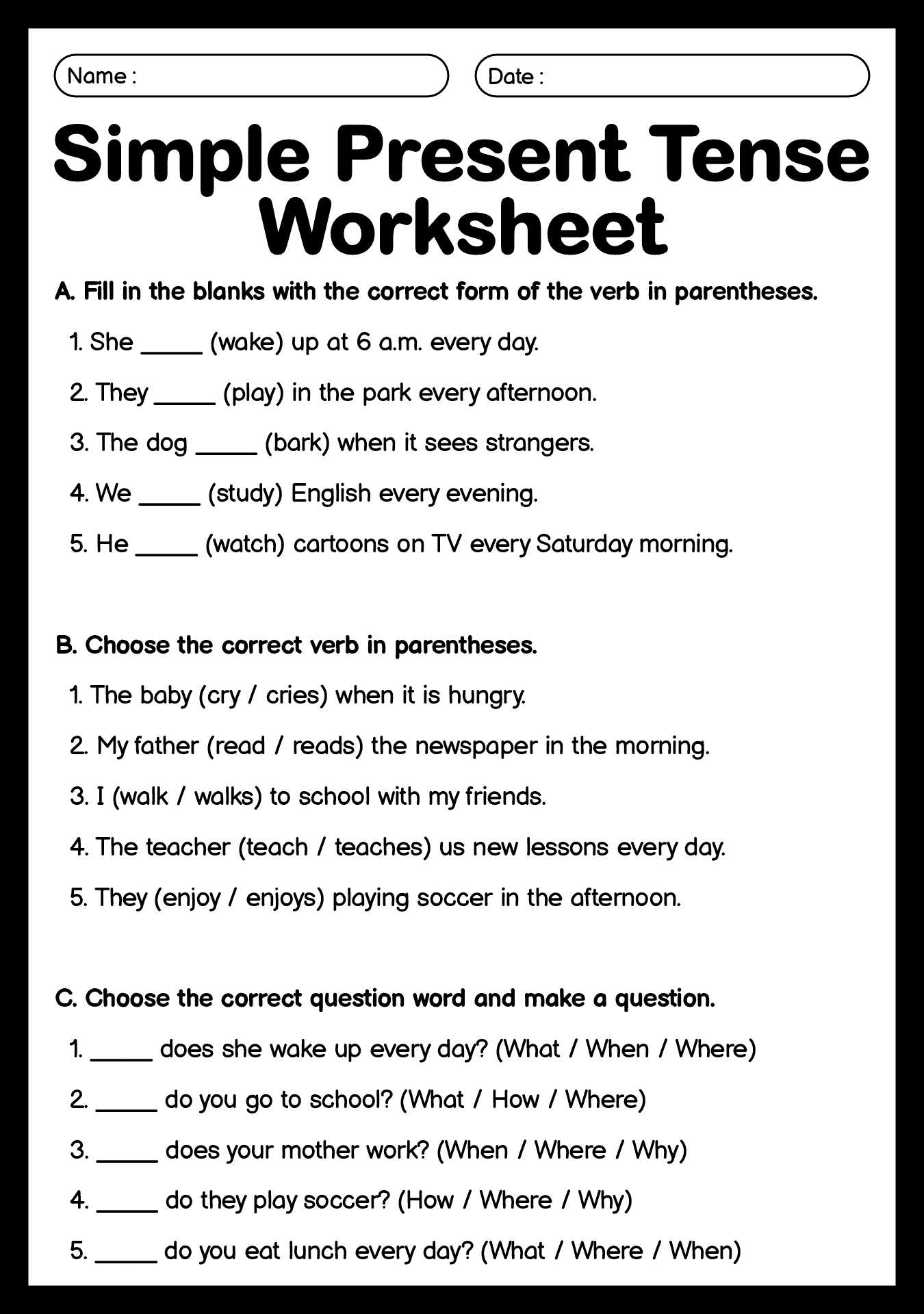
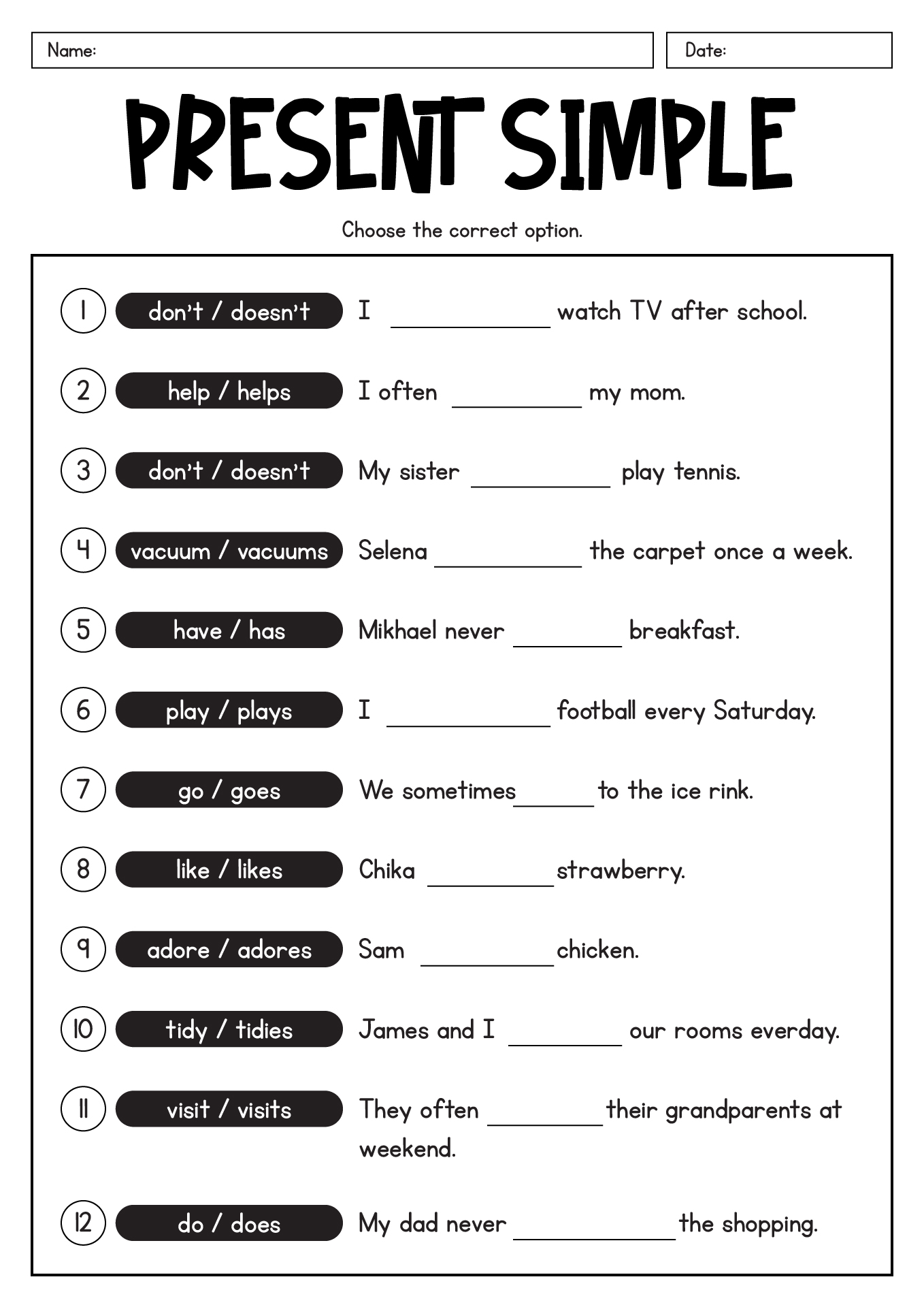
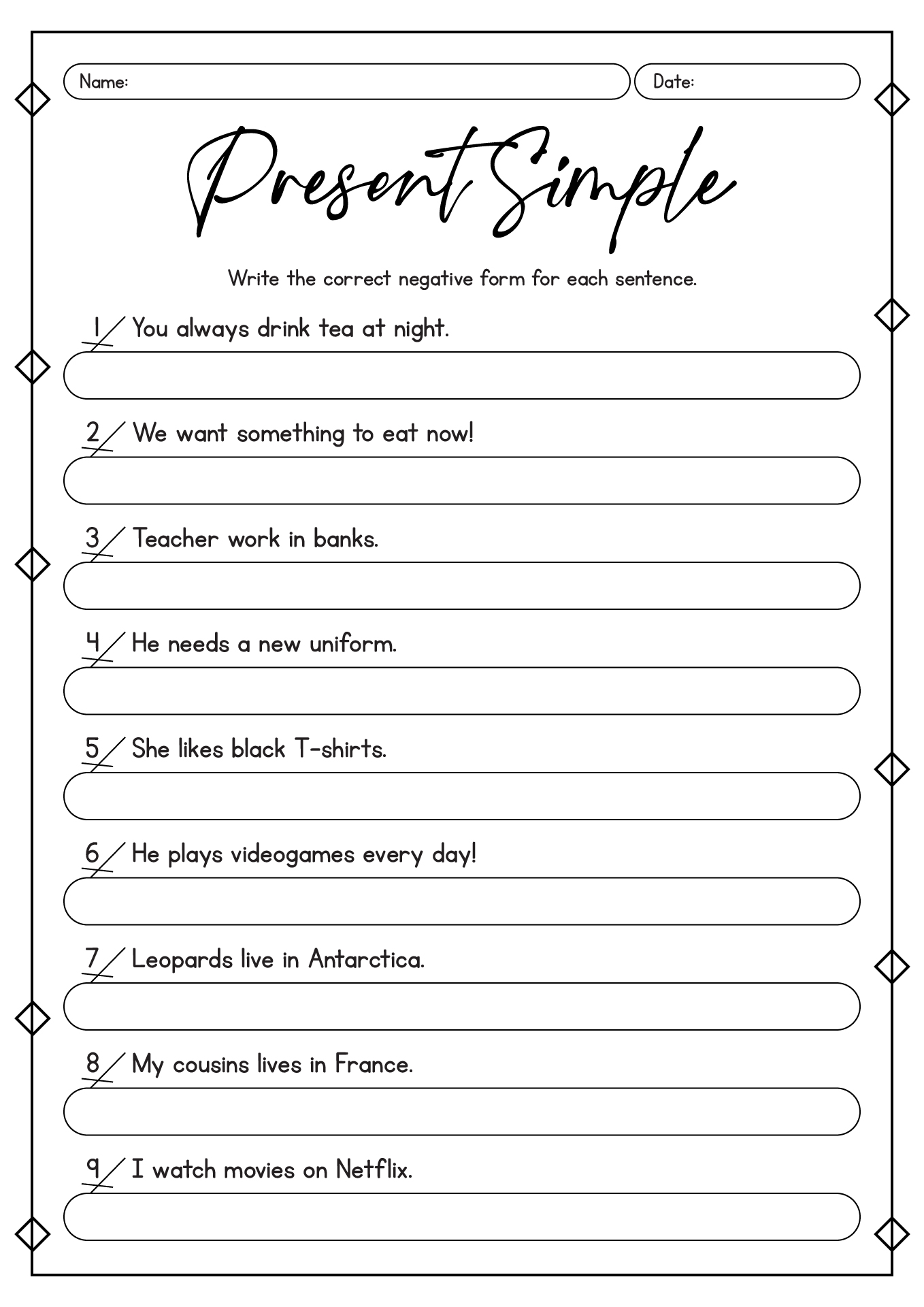
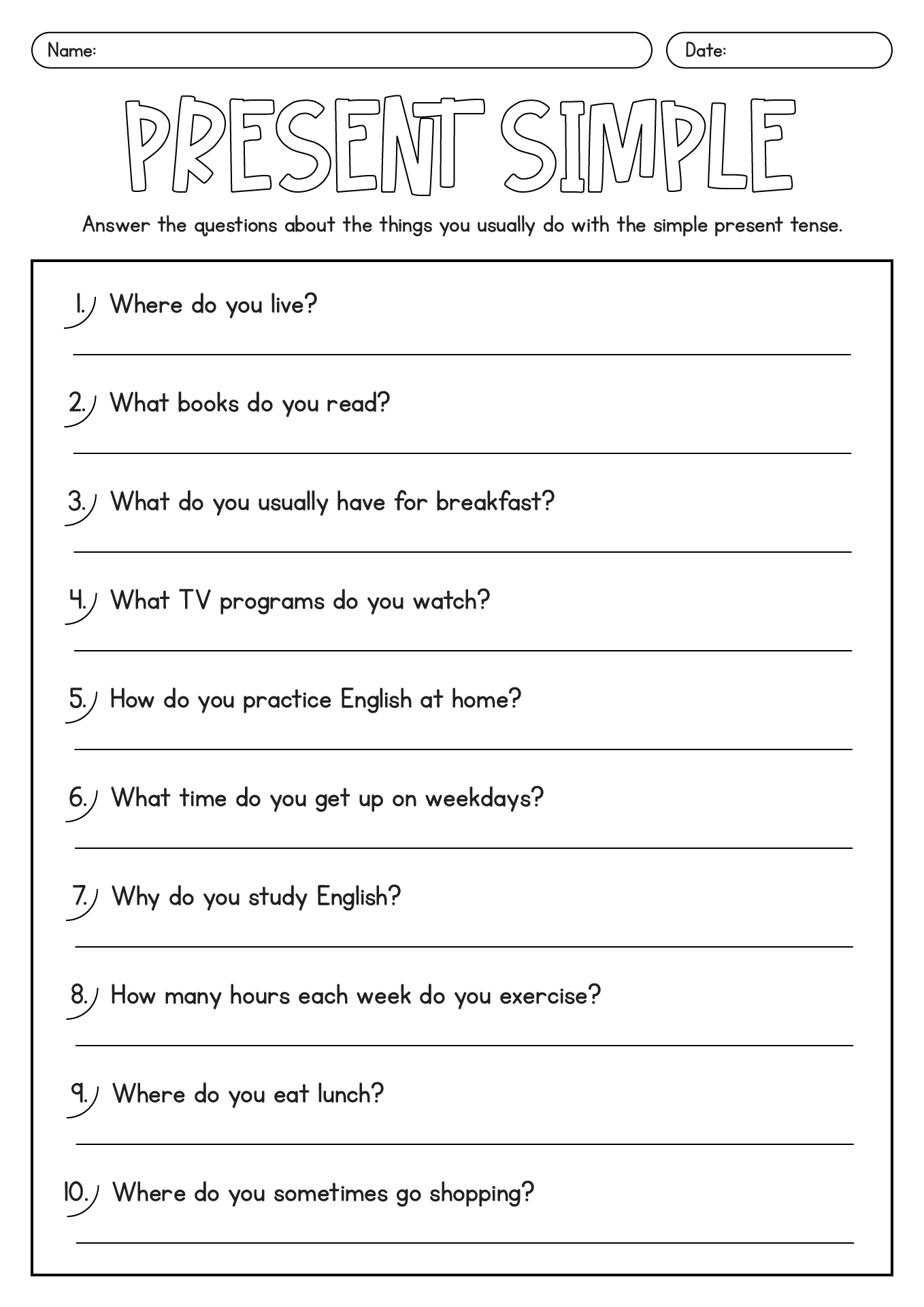
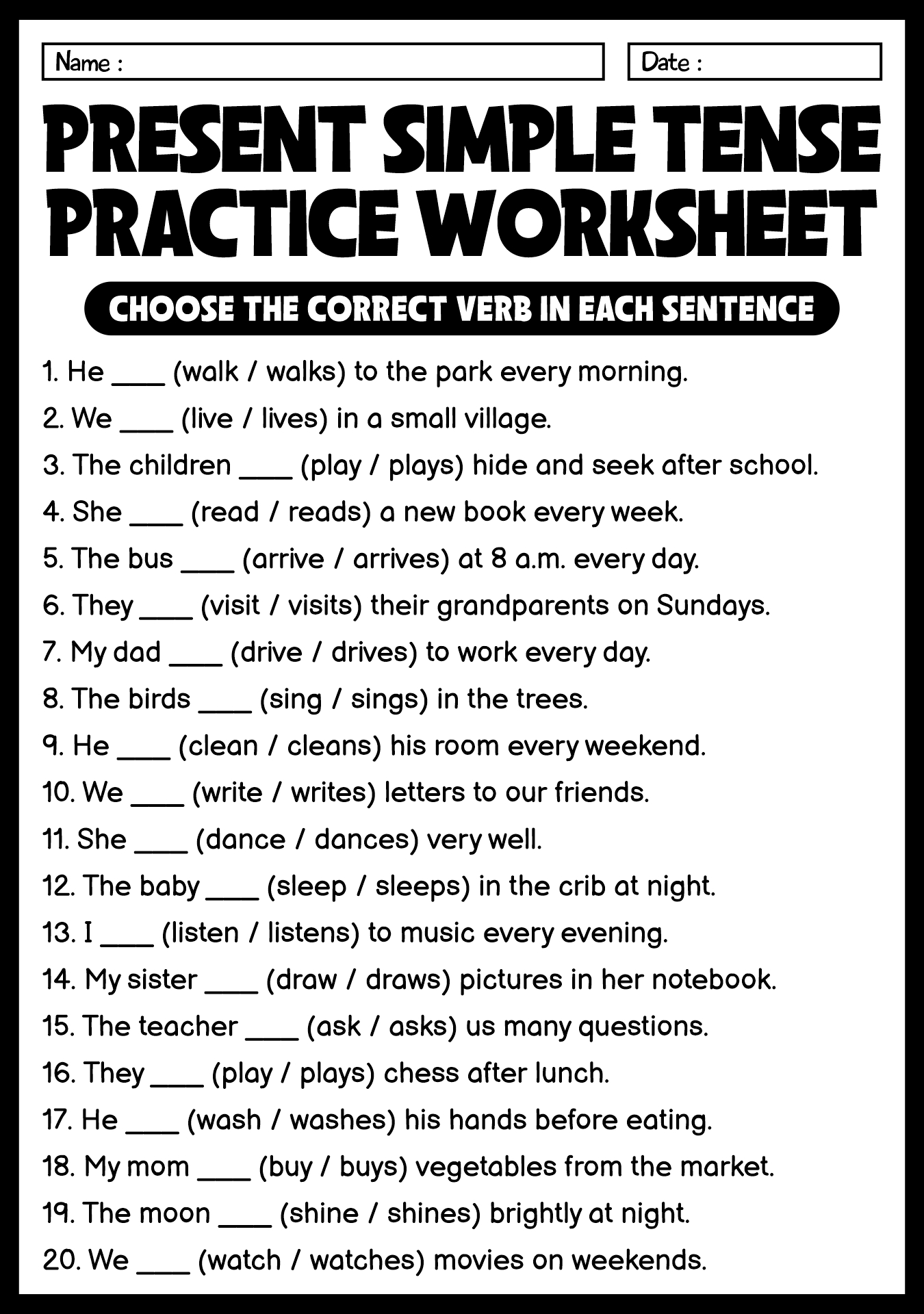









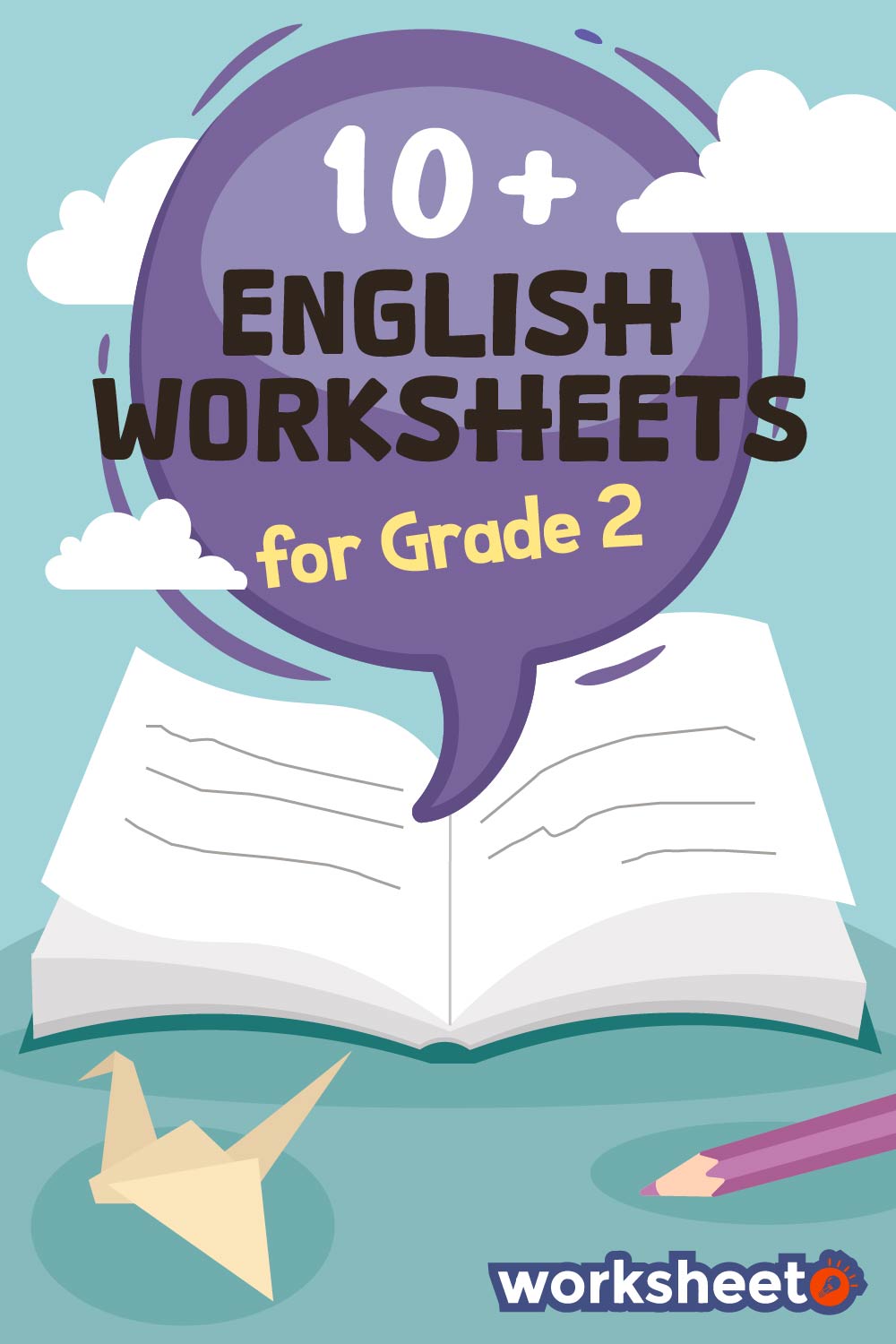
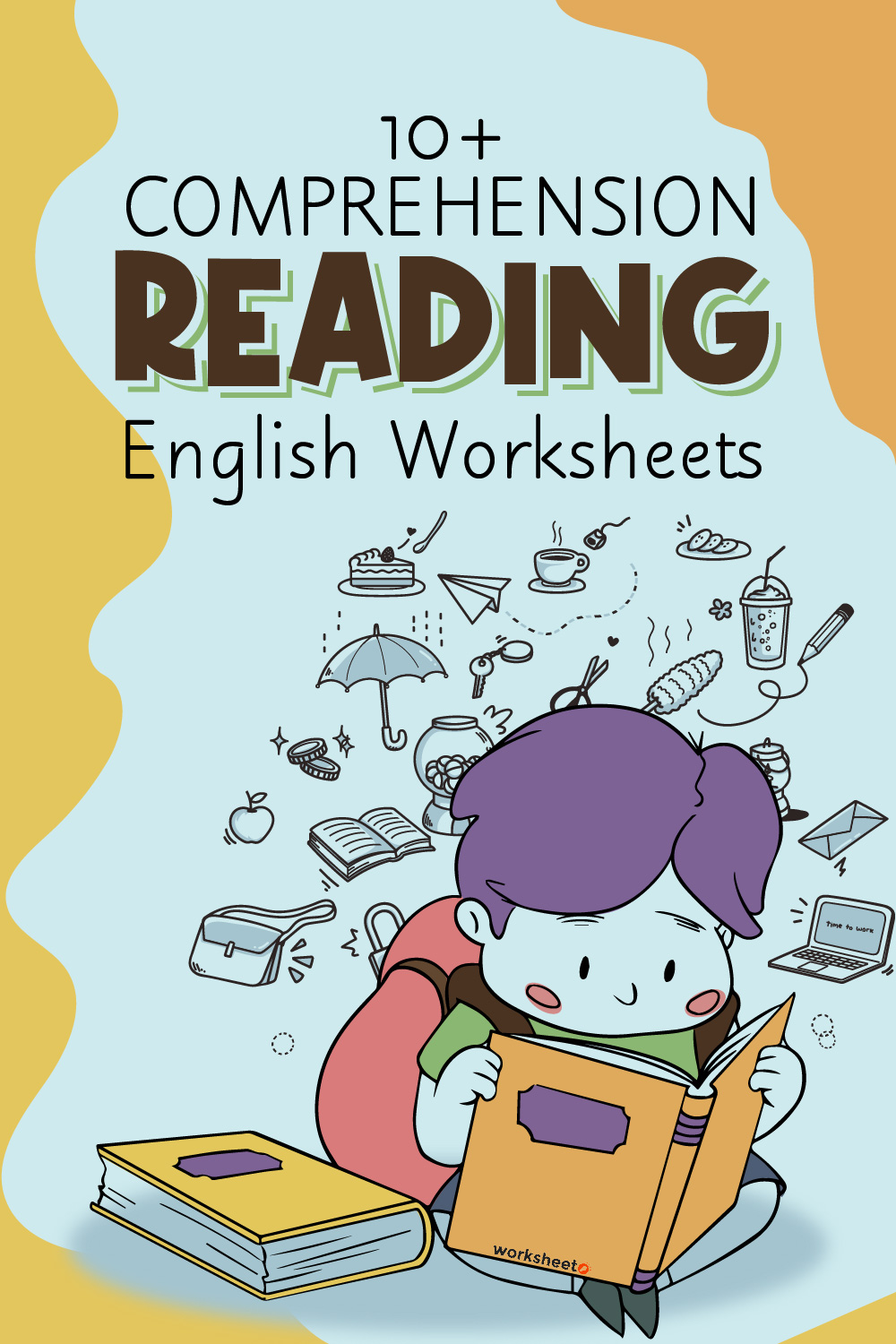

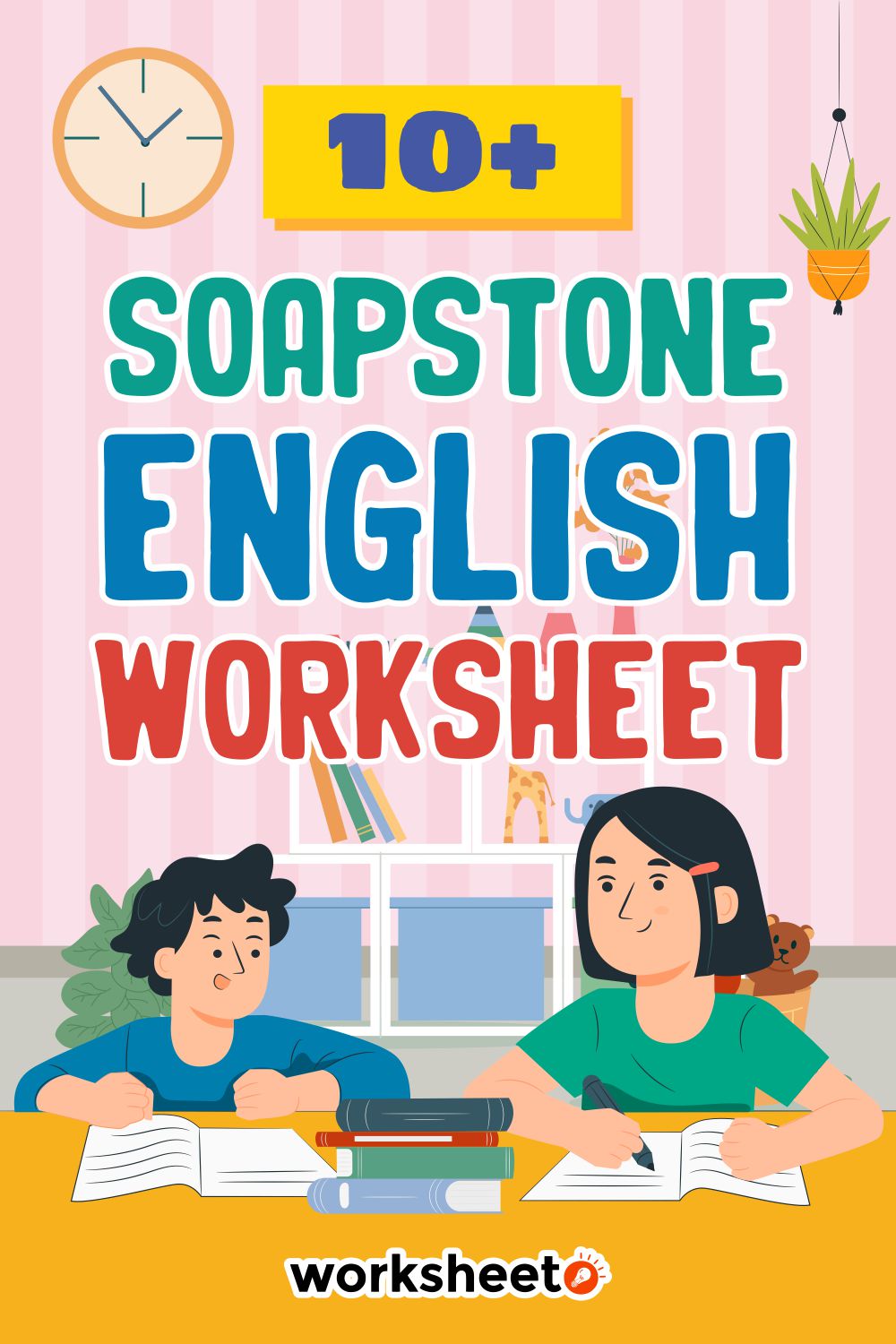
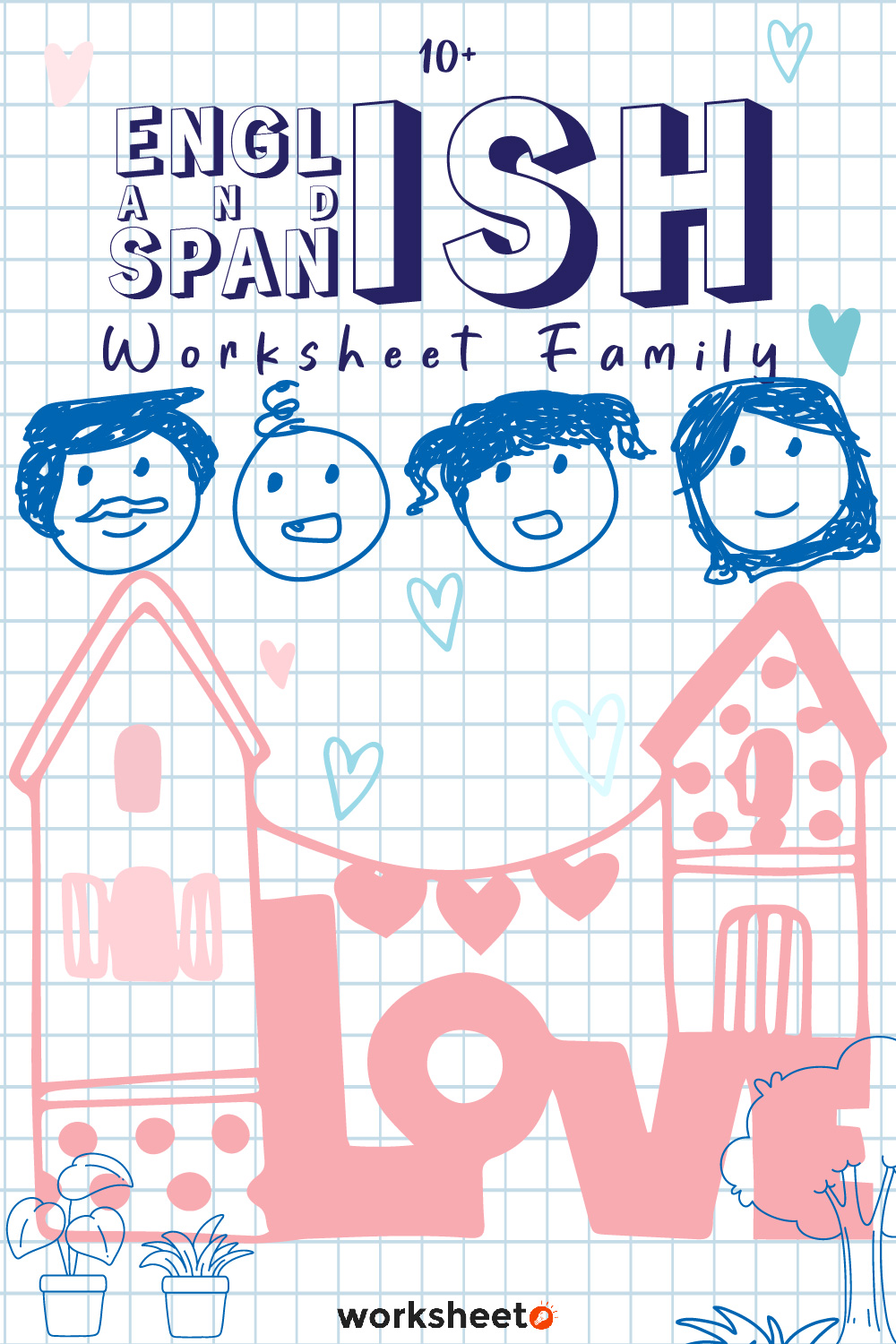
Comments